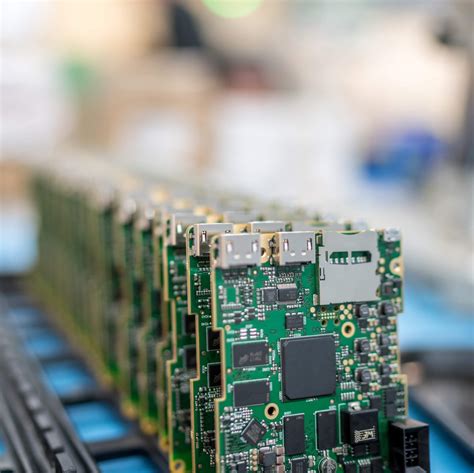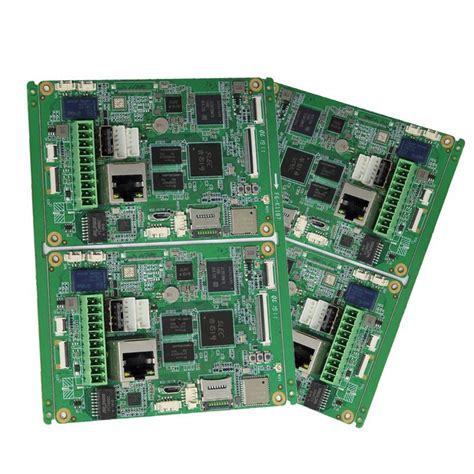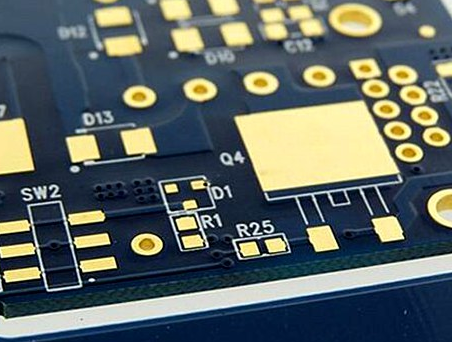Pcb material
Understanding The Different Types Of PCB Materials
Printed Circuit Boards (PCBs) are the backbone of modern electronic devices, serving as the foundation upon which electronic components are mounted and interconnected. The choice of PCB material is crucial, as it directly impacts the performance, reliability, and cost of the final product. Understanding the different types of PCB materials is essential for engineers and designers who aim to optimize their designs for specific applications.
To begin with, the most commonly used PCB material is FR-4, a composite made of woven fiberglass cloth with an epoxy resin binder that is flame resistant.
This material is favored for its excellent balance of cost, performance, and durability. FR-4 is widely used in consumer electronics, telecommunications, and industrial applications due to its good electrical insulation properties and mechanical strength. However, it is important to note that while FR-4 is suitable for a wide range of applications, it may not be the best choice for high-frequency or high-temperature environments.
For applications requiring higher performance, materials such as Rogers laminates are often considered.
Rogers materials are known for their superior dielectric properties, making them ideal for high-frequency applications such as RF and microwave circuits. These materials offer low signal loss and excellent thermal management, which are critical for maintaining signal integrity in demanding environments. Although Rogers materials are more expensive than FR-4, their benefits in terms of performance can justify the additional cost in specialized applications.
In addition to FR-4 and Rogers, there are other materials designed for specific needs.
For instance, polyimide is a material that offers excellent thermal stability and is often used in flexible PCBs. Its ability to withstand high temperatures makes it suitable for aerospace and military applications where reliability under extreme conditions is paramount. Moreover, polyimide’s flexibility allows for innovative design solutions in compact and dynamic electronic devices.
Another noteworthy material is metal-core PCBs, which incorporate a metal layer, typically aluminum or copper, to enhance thermal conductivity.
These PCBs are particularly useful in applications where heat dissipation is a critical concern, such as in LED lighting and power electronics. The metal core helps to efficiently transfer heat away from sensitive components, thereby improving the overall reliability and lifespan of the device.
Furthermore, ceramic-based PCBs are gaining attention for their exceptional thermal and electrical properties.
These materials are used in high-power and high-frequency applications where traditional materials may fall short. Ceramics offer excellent heat resistance and can operate at higher temperatures without degrading, making them suitable for use in harsh environments.
In conclusion, the selection of PCB material is a critical decision that influences the performance and reliability of electronic devices. While FR-4 remains the industry standard for many applications, alternative materials such as Rogers, polyimide, metal-core, and ceramics provide specialized solutions for specific challenges. By understanding the unique properties and advantages of each material, engineers and designers can make informed choices that align with the requirements of their projects. As technology continues to advance, the development of new materials will undoubtedly expand the possibilities for innovative electronic designs, further emphasizing the importance of material selection in the PCB industry.
The Impact Of PCB Material Choice On Circuit Performance
The choice of printed circuit board (PCB) material plays a crucial role in determining the overall performance and reliability of electronic circuits. As the backbone of electronic devices, PCBs provide the necessary mechanical support and electrical connections for various components. Therefore, selecting the appropriate material is essential to ensure optimal circuit functionality and longevity. The impact of PCB material choice on circuit performance can be observed through several key factors, including thermal management, signal integrity, and manufacturing considerations.
To begin with, thermal management is a critical aspect of circuit performance that is heavily influenced by the choice of PCB material.
Electronic components generate heat during operation, and if this heat is not effectively dissipated, it can lead to component failure or reduced performance. Materials with high thermal conductivity, such as metal-core PCBs, are often preferred in applications where heat dissipation is a priority. These materials help to efficiently transfer heat away from critical components, thereby maintaining the circuit’s stability and extending its lifespan. Conversely, materials with lower thermal conductivity may be suitable for applications with minimal heat generation, where cost and weight considerations are more significant.
In addition to thermal management, signal integrity is another vital factor affected by PCB material selection.
Signal integrity refers to the preservation of signal quality as it travels through the circuit. High-frequency applications, such as radio frequency (RF) and microwave circuits, require materials with low dielectric constant and low loss tangent to minimize signal distortion and attenuation. Materials like polytetrafluoroethylene (PTFE) and ceramic-filled laminates are often chosen for these applications due to their superior electrical properties. On the other hand, for low-frequency applications, standard materials like FR-4 may suffice, offering a balance between performance and cost.
Moreover, the choice of PCB material also impacts the manufacturing process and overall cost of the circuit.
Some materials are easier to work with and more compatible with standard manufacturing techniques, which can reduce production time and costs. For instance, FR-4 is a widely used material due to its good mechanical properties, ease of fabrication, and cost-effectiveness. However, advanced materials with specialized properties may require more complex manufacturing processes, leading to higher production costs. Therefore, it is essential to consider the trade-offs between material performance and manufacturing feasibility when selecting a PCB material.
Furthermore, environmental factors and regulatory compliance can also influence the choice of PCB material.
As electronic devices become more prevalent, there is an increasing emphasis on sustainability and environmental impact. Materials that are environmentally friendly and comply with regulations such as the Restriction of Hazardous Substances (RoHS) directive are becoming more desirable. This shift towards sustainable materials not only helps in reducing the environmental footprint but also ensures that the products meet global standards.
In conclusion, the choice of PCB material is a critical decision that significantly impacts circuit performance. By carefully considering factors such as thermal management, signal integrity, manufacturing processes, and environmental compliance, designers can select the most suitable material for their specific application. This thoughtful selection process ultimately leads to enhanced circuit performance, reliability, and sustainability, ensuring that electronic devices meet the ever-evolving demands of modern technology.
Innovations In Eco-Friendly PCB Materials
In recent years, the electronics industry has witnessed a significant shift towards sustainability, driven by the growing awareness of environmental issues and the need for eco-friendly solutions. One area that has garnered considerable attention is the development of eco-friendly materials for printed circuit boards (PCBs). As the backbone of electronic devices, PCBs are integral to the functionality of countless products, from smartphones to industrial machinery. However, traditional PCB manufacturing processes and materials have raised environmental concerns due to their reliance on hazardous chemicals and non-renewable resources. Consequently, innovations in eco-friendly PCB materials have emerged as a crucial focus for researchers and manufacturers alike.
To begin with, one of the most promising advancements in this field is the development of biodegradable PCB substrates.
Traditional substrates, such as those made from fiberglass and epoxy resins, are not only energy-intensive to produce but also pose significant disposal challenges. In contrast, biodegradable substrates, often derived from natural fibers like cellulose or other plant-based materials, offer a sustainable alternative. These materials decompose naturally at the end of their lifecycle, reducing the environmental impact associated with electronic waste. Moreover, the use of biodegradable substrates aligns with the principles of a circular economy, promoting resource efficiency and waste minimization.
In addition to biodegradable substrates, another innovative approach involves the use of conductive inks made from organic materials.
Conventional conductive inks typically contain metals such as silver or copper, which are not only costly but also environmentally taxing to extract and process. By contrast, organic conductive inks, often based on carbon or other organic compounds, present a more sustainable option. These inks can be printed onto various substrates using low-energy processes, further enhancing their eco-friendly credentials. Furthermore, organic conductive inks offer the potential for flexible and lightweight PCB designs, opening up new possibilities for electronic device innovation.
Transitioning from materials to processes, the adoption of additive manufacturing techniques, such as 3D printing, has also contributed to the development of eco-friendly PCBs.
Traditional PCB manufacturing involves multiple steps, including etching and drilling, which generate significant waste and consume substantial amounts of energy. In contrast, additive manufacturing allows for the precise deposition of materials, minimizing waste and reducing energy consumption. This method not only supports the use of eco-friendly materials but also enables rapid prototyping and customization, thereby accelerating the development of sustainable electronic products.
Furthermore, the integration of eco-friendly materials into PCB design is supported by advancements in recycling technologies.
Efficient recycling processes are essential to reclaim valuable materials from end-of-life electronics and reduce the demand for virgin resources. Recent innovations in chemical and mechanical recycling methods have improved the recovery rates of metals and other components from PCBs, making it feasible to close the loop in electronic manufacturing. By combining eco-friendly materials with effective recycling strategies, the electronics industry can significantly mitigate its environmental footprint.
In conclusion, the pursuit of eco-friendly PCB materials represents a vital step towards sustainable electronics manufacturing. Through the development of biodegradable substrates, organic conductive inks, and the adoption of additive manufacturing techniques, the industry is making strides in reducing its environmental impact. Coupled with advancements in recycling technologies, these innovations hold the promise of a more sustainable future for electronic devices. As research and development continue to advance, the widespread adoption of eco-friendly PCB materials is likely to become an integral part of the electronics industry’s commitment to environmental stewardship.

Comparing Cost And Durability Of Various PCB Materials
Printed Circuit Boards (PCBs) are the backbone of modern electronic devices, serving as the platform upon which electronic components are mounted and interconnected. The choice of PCB material is crucial, as it directly impacts both the cost and durability of the final product. Understanding the trade-offs between different materials can help manufacturers make informed decisions that balance performance with budgetary constraints.
One of the most commonly used materials in PCB manufacturing is FR-4, a composite made of woven fiberglass cloth with an epoxy resin binder.
FR-4 is favored for its excellent balance of cost and performance. It offers good mechanical strength, electrical insulation, and thermal resistance, making it suitable for a wide range of applications. However, while FR-4 is cost-effective, it may not be the best choice for high-frequency applications due to its relatively high dielectric constant and loss tangent.
For applications requiring better high-frequency performance, materials such as Rogers laminates are often considered.
Rogers materials are engineered to provide lower dielectric constants and loss tangents, which are essential for minimizing signal loss in high-frequency circuits. Although these materials offer superior electrical performance, they come at a higher cost compared to FR-4. This makes them more suitable for specialized applications where performance outweighs cost considerations.
In addition to electrical performance, thermal management is another critical factor influencing the choice of PCB material.
High-power applications, such as those found in power electronics and LED lighting, generate significant amounts of heat. In such cases, materials with enhanced thermal conductivity, like metal-core PCBs, are preferred. Metal-core PCBs typically use aluminum or copper as a base material, which helps dissipate heat more effectively than traditional FR-4. While these materials improve durability by reducing thermal stress, they also increase the overall cost of the PCB.
Another consideration is the environmental impact and regulatory compliance of PCB materials.
With increasing awareness of environmental issues, materials that are halogen-free and RoHS compliant are gaining popularity. These materials reduce the release of toxic substances during manufacturing and disposal, aligning with global sustainability goals. However, achieving these environmental standards can sometimes lead to higher material costs, which manufacturers must weigh against the benefits of compliance and market demand.
Furthermore, the miniaturization trend in electronics has led to the development of advanced materials like flexible PCBs.
These materials allow for the creation of lightweight and compact designs that can bend and twist without breaking. Flexible PCBs are made from materials such as polyimide, which offers excellent flexibility and thermal stability. While they provide unique advantages in terms of design flexibility and space-saving, the cost of flexible PCBs is generally higher than that of rigid PCBs, making them more suitable for specific applications where these attributes are essential.
In conclusion, the choice of PCB material involves a careful evaluation of various factors, including cost, durability, electrical performance, thermal management, environmental impact, and design requirements. Each material offers distinct advantages and limitations, and the decision ultimately depends on the specific needs of the application. By understanding these trade-offs, manufacturers can select the most appropriate material that meets both performance expectations and budgetary constraints, ensuring the successful development of electronic products.







